I asked a yoga teacher how to test and improve my hip mobility and she revealed the most obvious indicator of tight hips
A yoga teacher says that sitting cross-legged can tell you a lot about your hip mobility
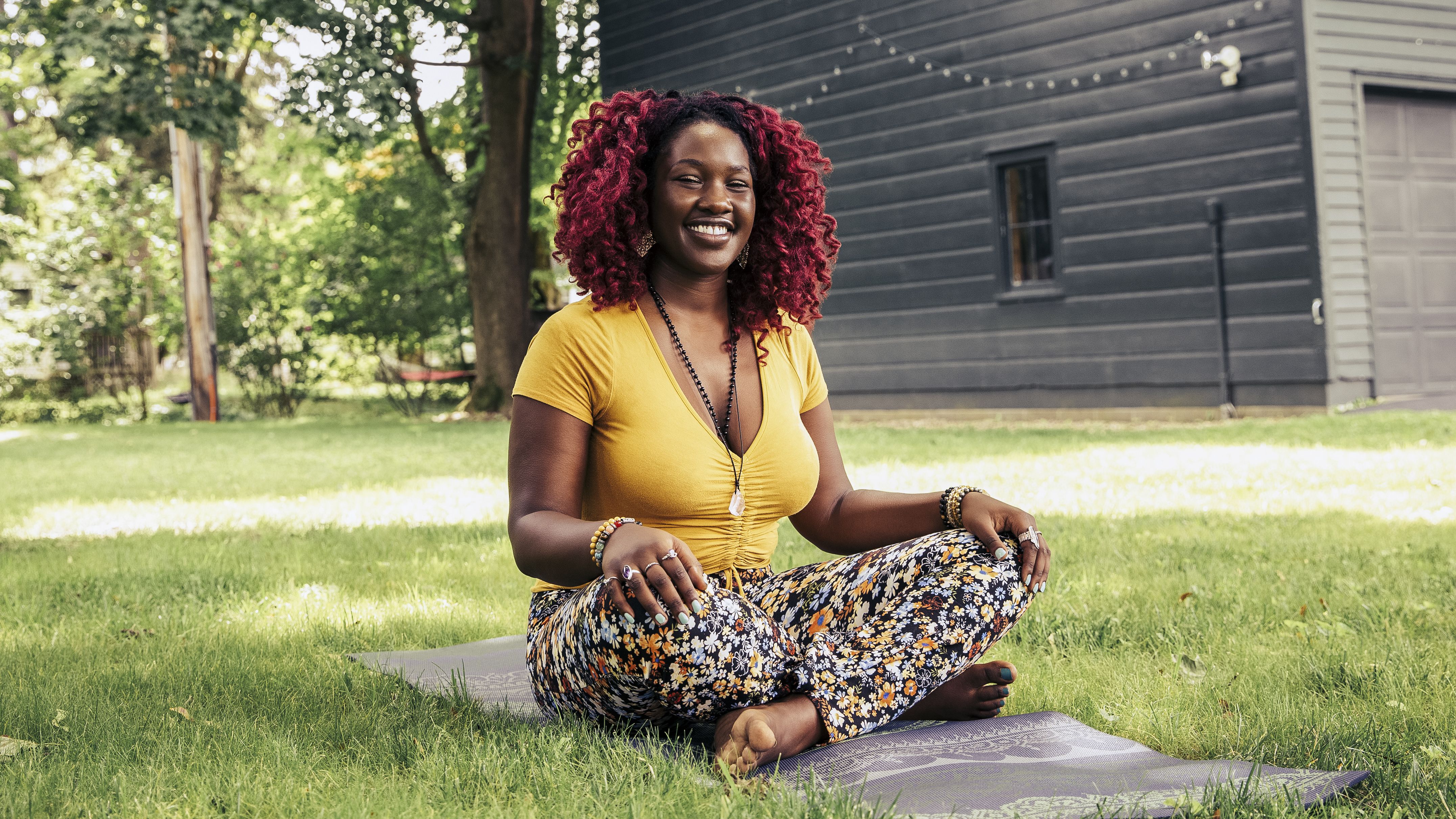
A lot of modern life is spent sitting down, whether that’s driving a car, working at a desk, or relaxing in front of the television after work. Spending all this time in one position has a detrimental effect on our hips, leading to tightness and immobility.
I spoke to Elma Panagaki, a yoga instructor at Bay Club, who shared her insights into how to test your hip mobility and how to fix that immobility if you have it.
“When we sit, the muscles at the front of our hips, like the hip flexors, get stuck in a shortened position, and the muscles at the back, like the glutes, pretty much shut off,” she says.
“Over time, this lack of movement makes our hips tight, weak, and less mobile, which is why they start to feel uncomfortable.”
So, if you do have tight hips, why should you care about improving them? Well, that mild stiffness can lead to discomfort and other injuries.
“Mobility is all about building both stretch and strength so you can move comfortably and feel great in your body,” says Panagaki.
“By spending just one to two minutes on each exercise [below], you can loosen tight areas, improve posture, and reduce the risk of injury.”
Start your week with achievable workout ideas, health tips and wellbeing advice in your inbox.
Panagaki has shared two simple ways you can test your hip mobility, and some gentle mini yoga flows that you can do to loosen up the area.
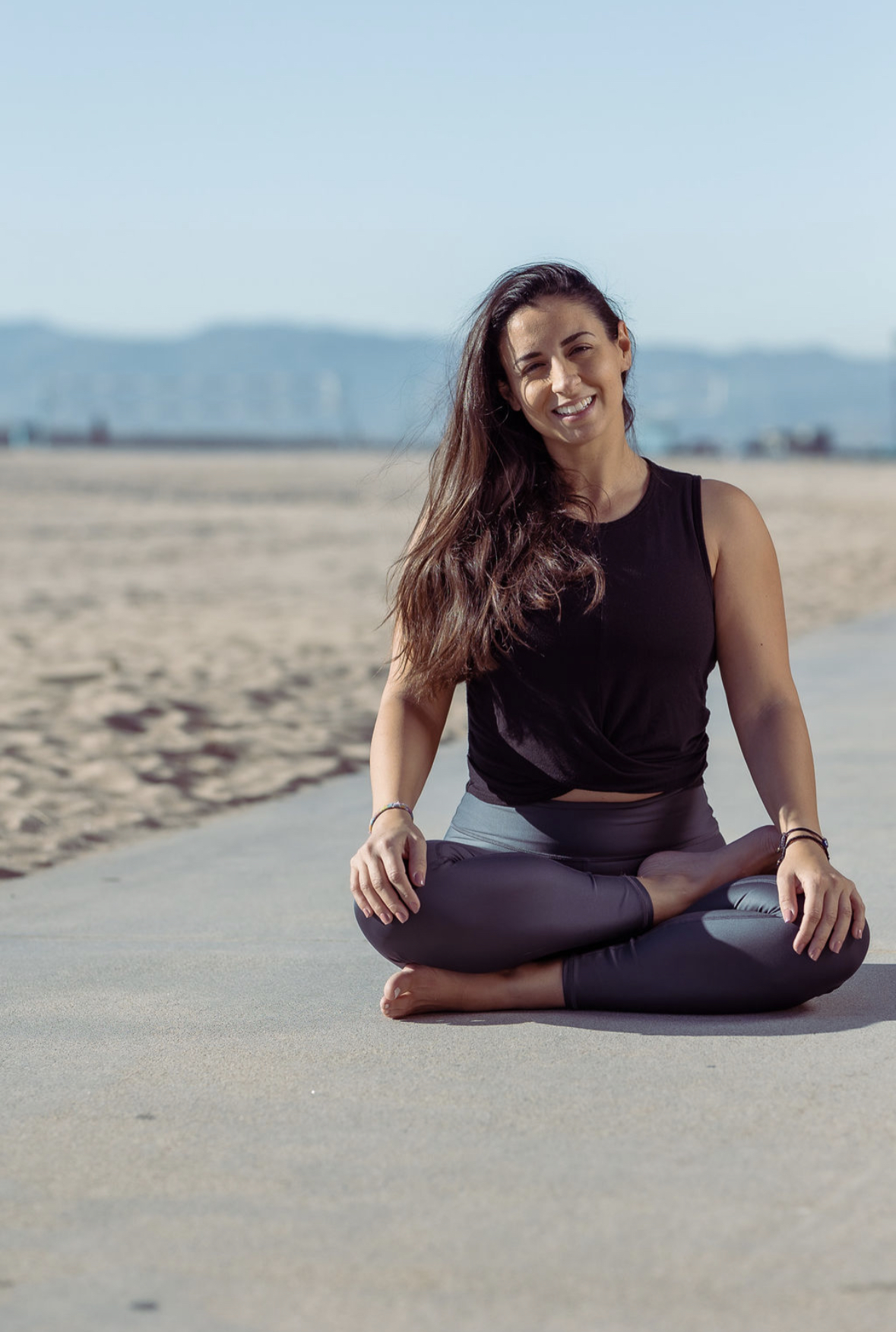
Elma is a 500-hour yoga, Pilates, and barre certified instructor from Athens, Greece. She teaches ashtanga, power, vinyasa, gentle yoga, pre and postnatal yoga, mat Pilates, ballet, and barre at various Bay Clubs in Los Angeles. Elma also founded the Barre Movement Training program, co-founded SIS Yoga Retreats, has multiple publications, and leads global events and retreats.
Test your hip mobility: cross your legs
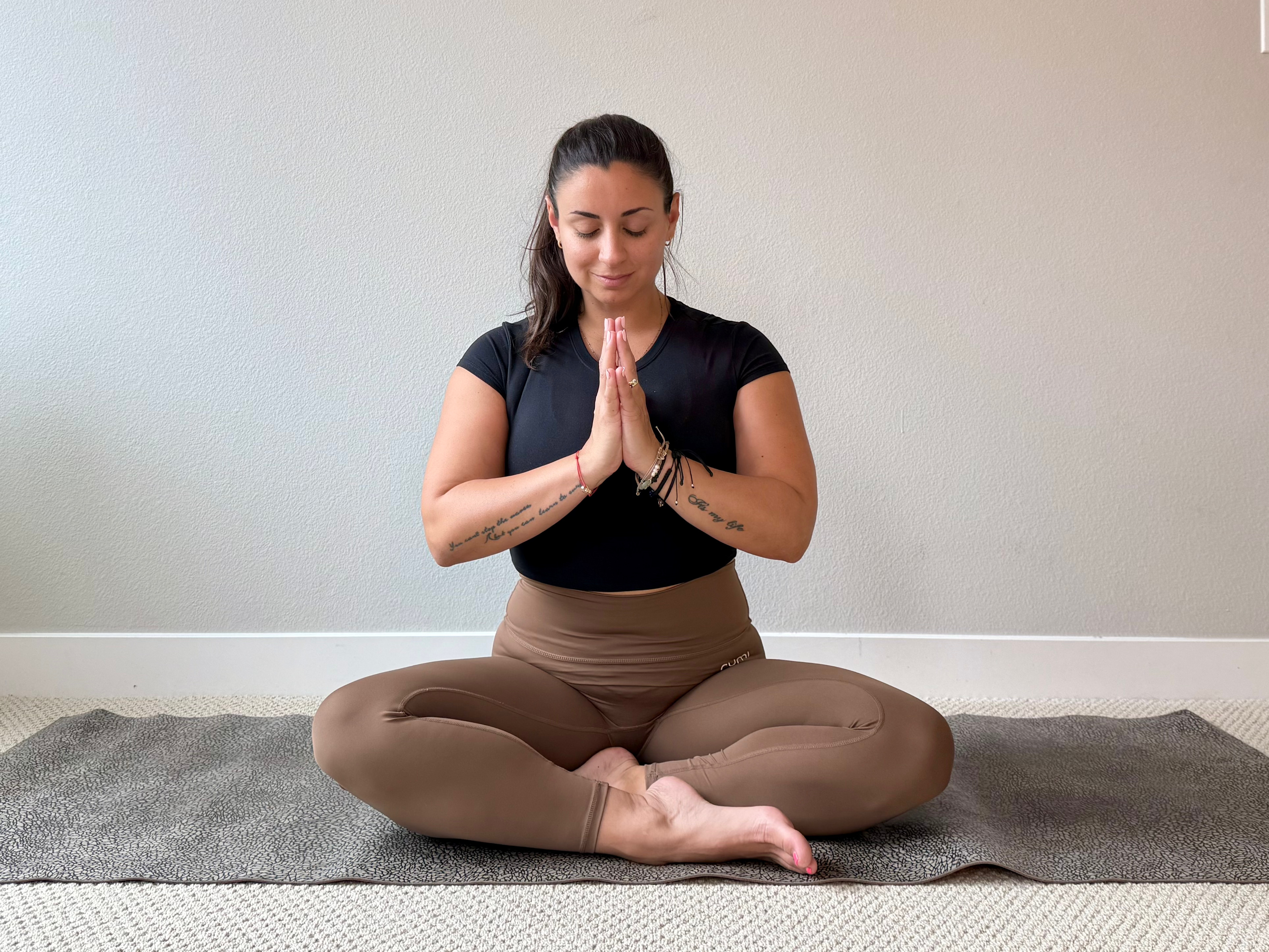
“A quick way to test your hip mobility is to sit down on the floor in a 'criss-cross applesauce' position—just like school,” she says. “Notice where your knees naturally settle. If they’re way up high, it’s a sign your hips might be a bit tight.”
She explains that tight hips don’t mean anything is wrong with your body, but doing this can help you identify areas that might need a little extra attention.
“Everyone’s different, and that’s totally fine,” she says. “It just gives you a heads-up on where to focus your mobility practice.”
Test your hip mobility: deep squat
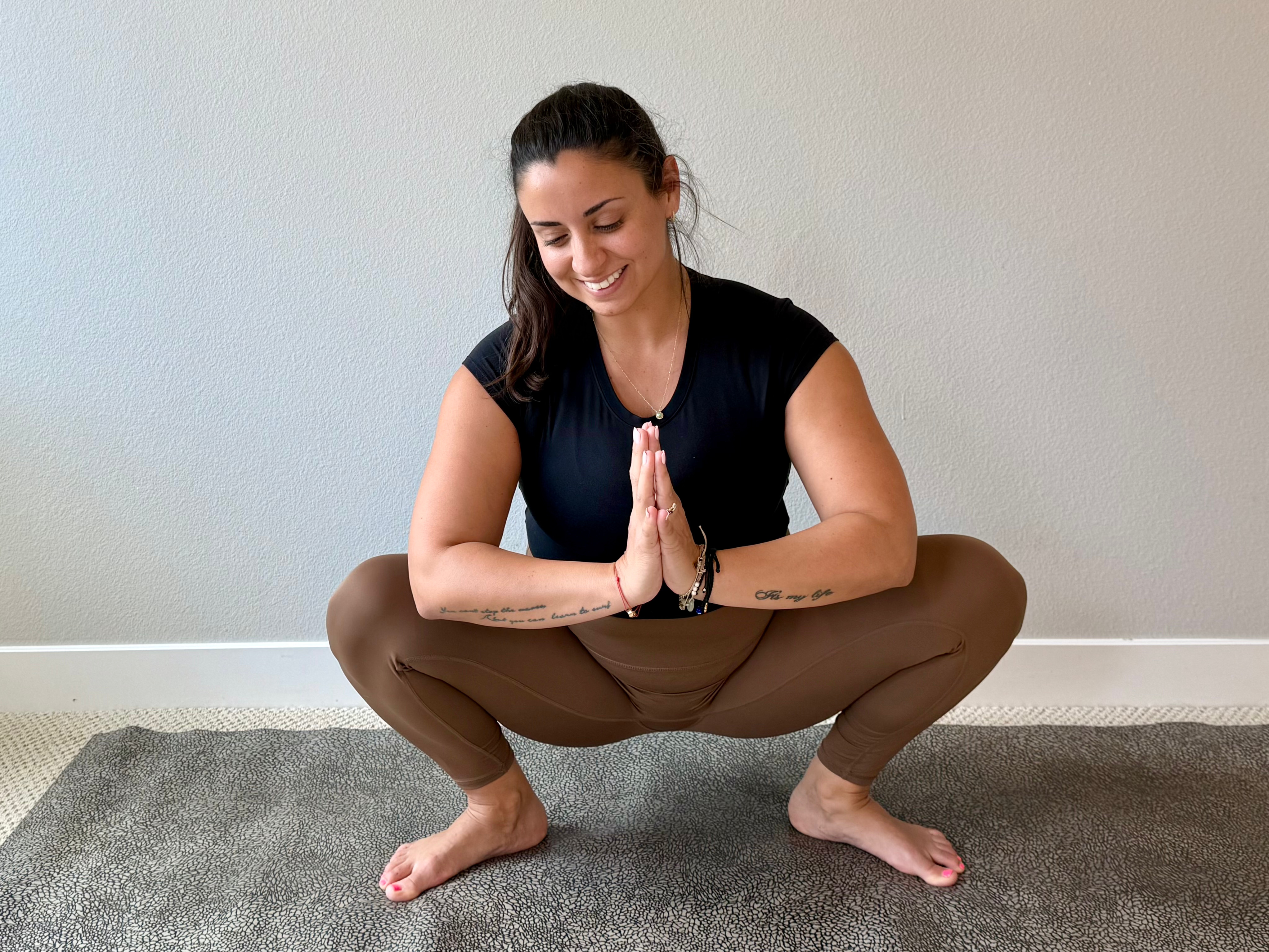
Step your feet wider than your hips, turn out your toes, then lower into a deep squat. Bring your hands together at your heart, and let your elbows gently push your knees apart.
If your heels pop up right away in this position or your hips feel super tight, that’s a sign you could use more hip-opening work.
How to improve your hip mobility
Try doing each of the poses below for one to two minutes, resting for 30 seconds before moving on to the next movement.
Don’t rush: make sure you take the time to feel each stretch and notice any limitations to your range of motion.
Windshield wiper
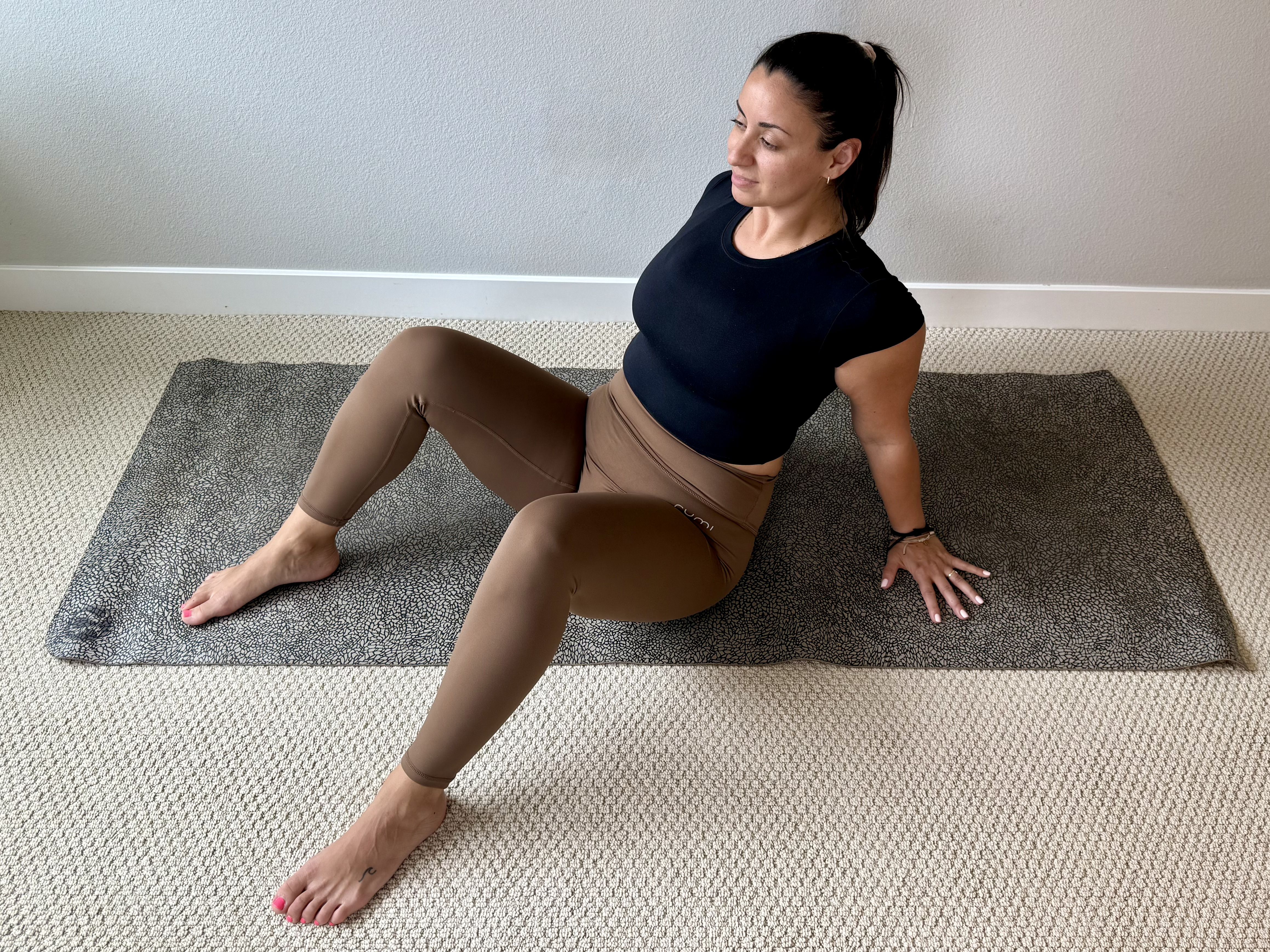
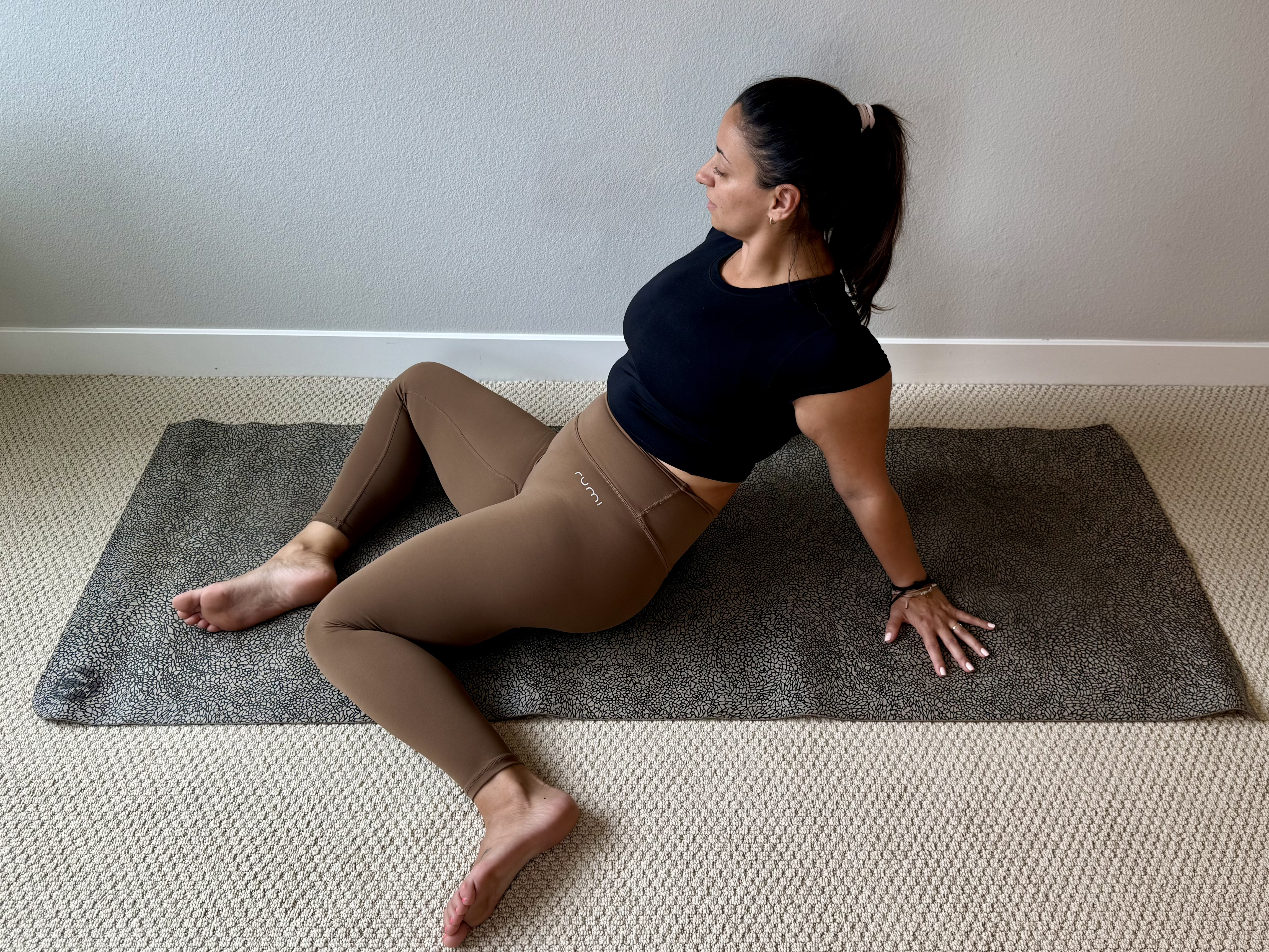
Time: 1-2min
- Sit with your back upright, knees bent and your feet flat on the floor, placing your hands behind you for support.
- Slowly drop both knees to one side, then sweep them over to the other side—like windshield wipers.
Child’s pose to striking cobra
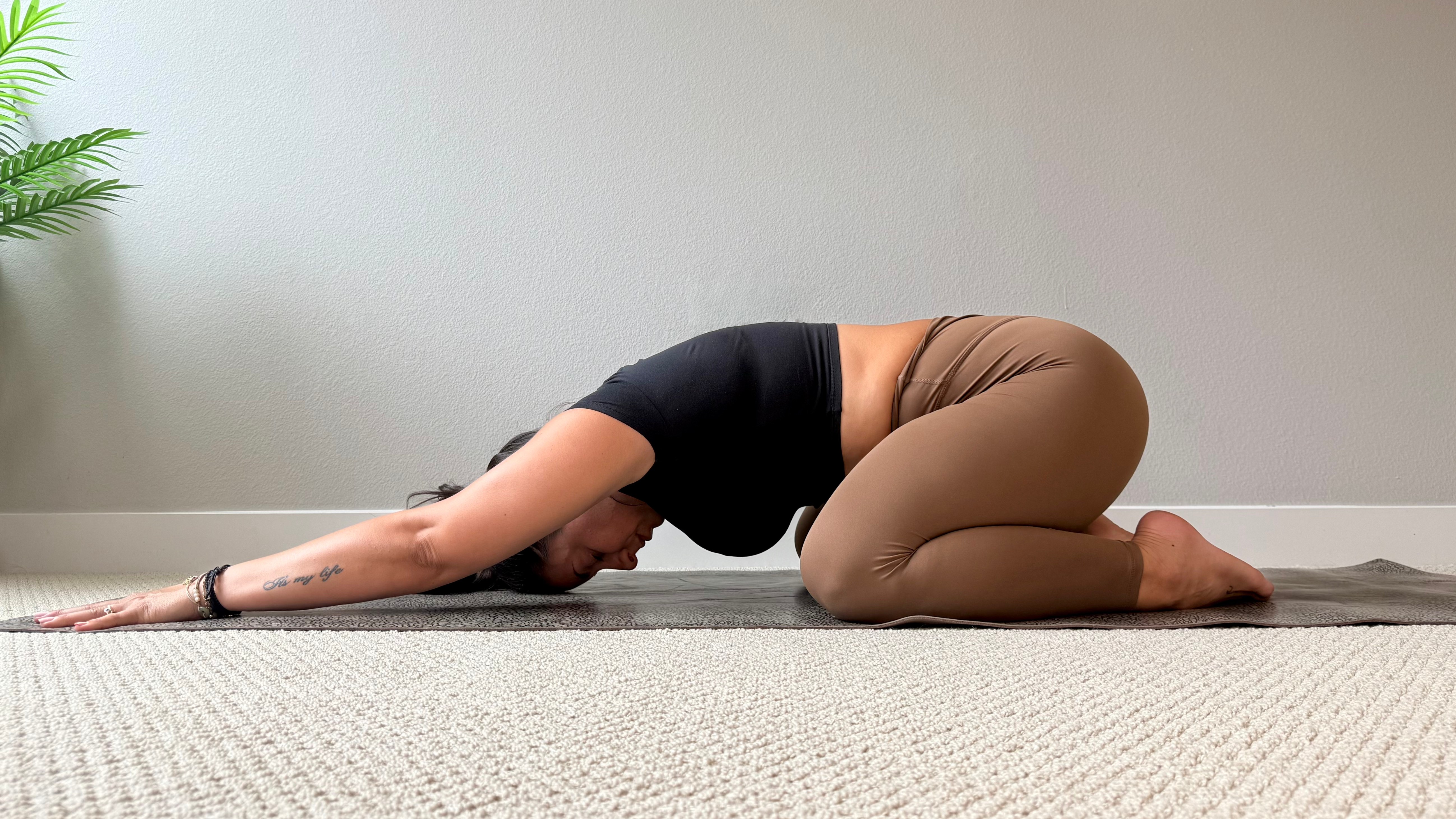
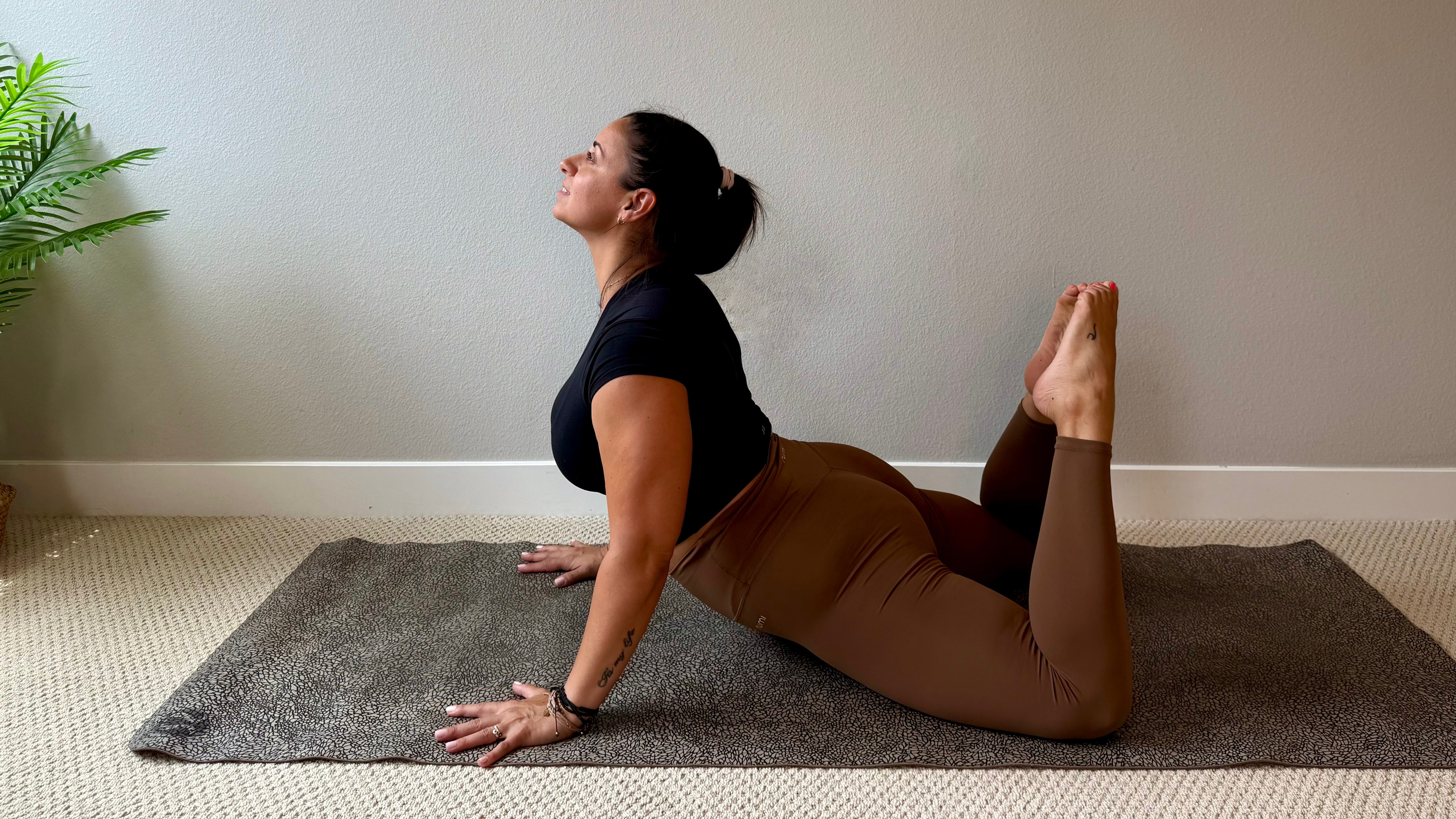
Time: 1-2min
- Kneel on the floor to come into child’s pose, sitting your hips back on your heels and bringing your chest toward the floor, while straightening your arms in front of you.
- On an inhale, slide your body forward, lift your chest, straighten your arms and roll your shoulders back, coming onto your knees and pointing your feet up. Notice how your hips feel as they move forward into this striking cobra position.
- On an exhale, glide your hips back into child’s pose.
- Repeat this slow, wave-like motion
Low lunge to half split

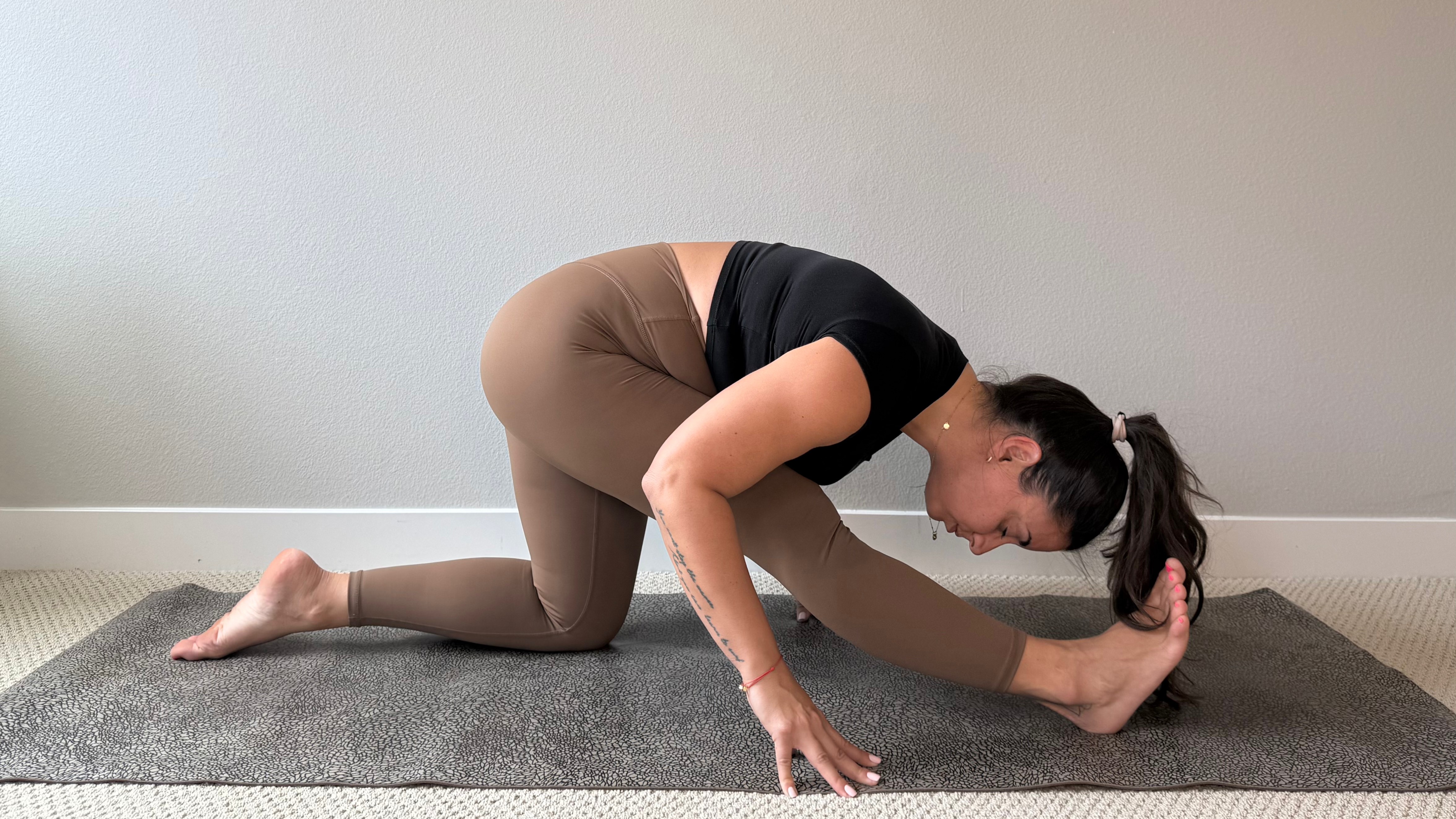
Time: 1-2min each side
- Start by kneeling with your right foot forward and your left knee and shin on the mat, so you're in a gentle low lunge.
- Slowly shift your hips back and straighten your front right leg to feel a stretch in your hamstring, coming into a half split.
- Inhale into the lunge again, then exhale as you fold into a half split. Feel free to add blocks under the hands if you need them.
Squat to forward fold
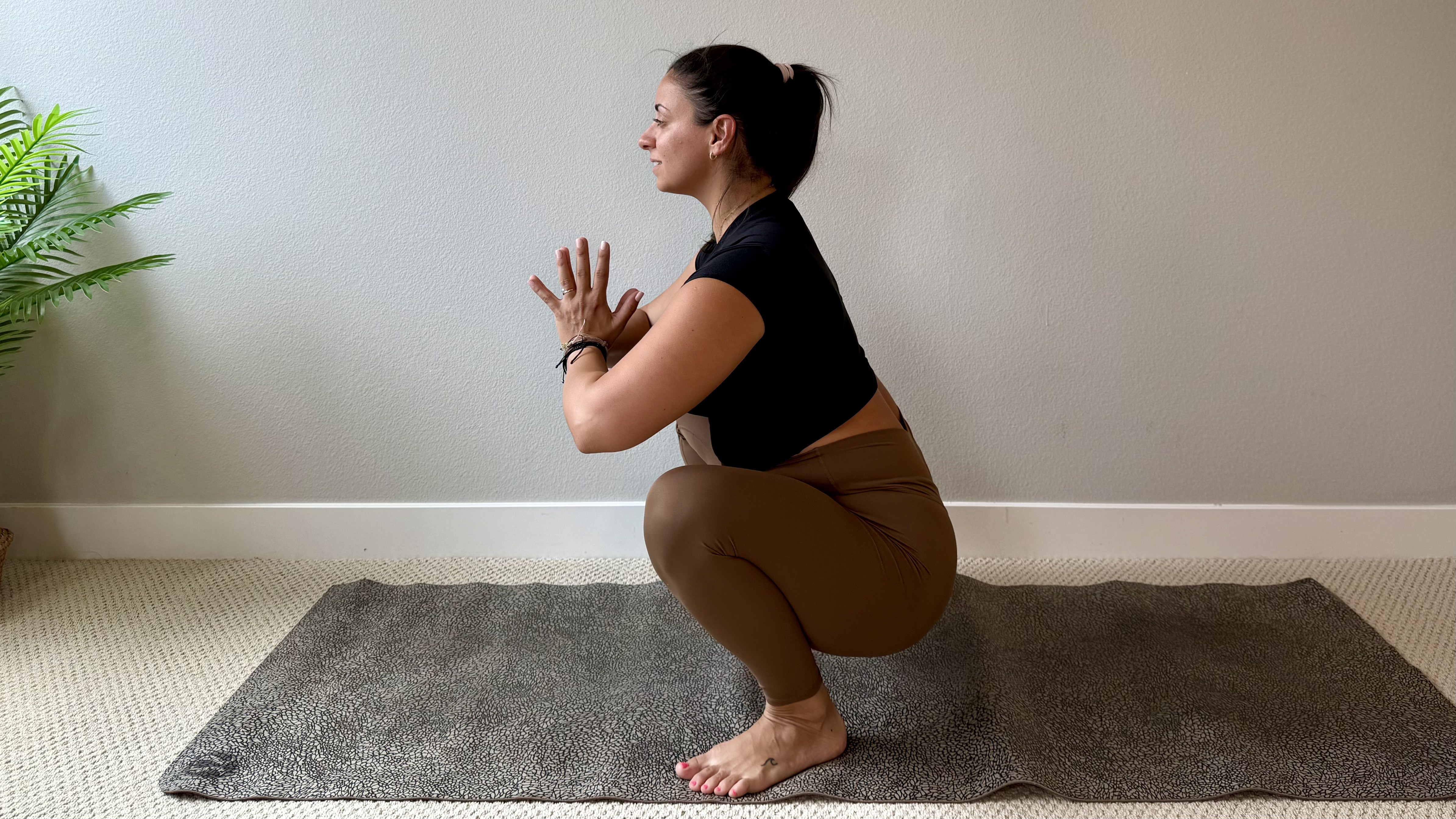
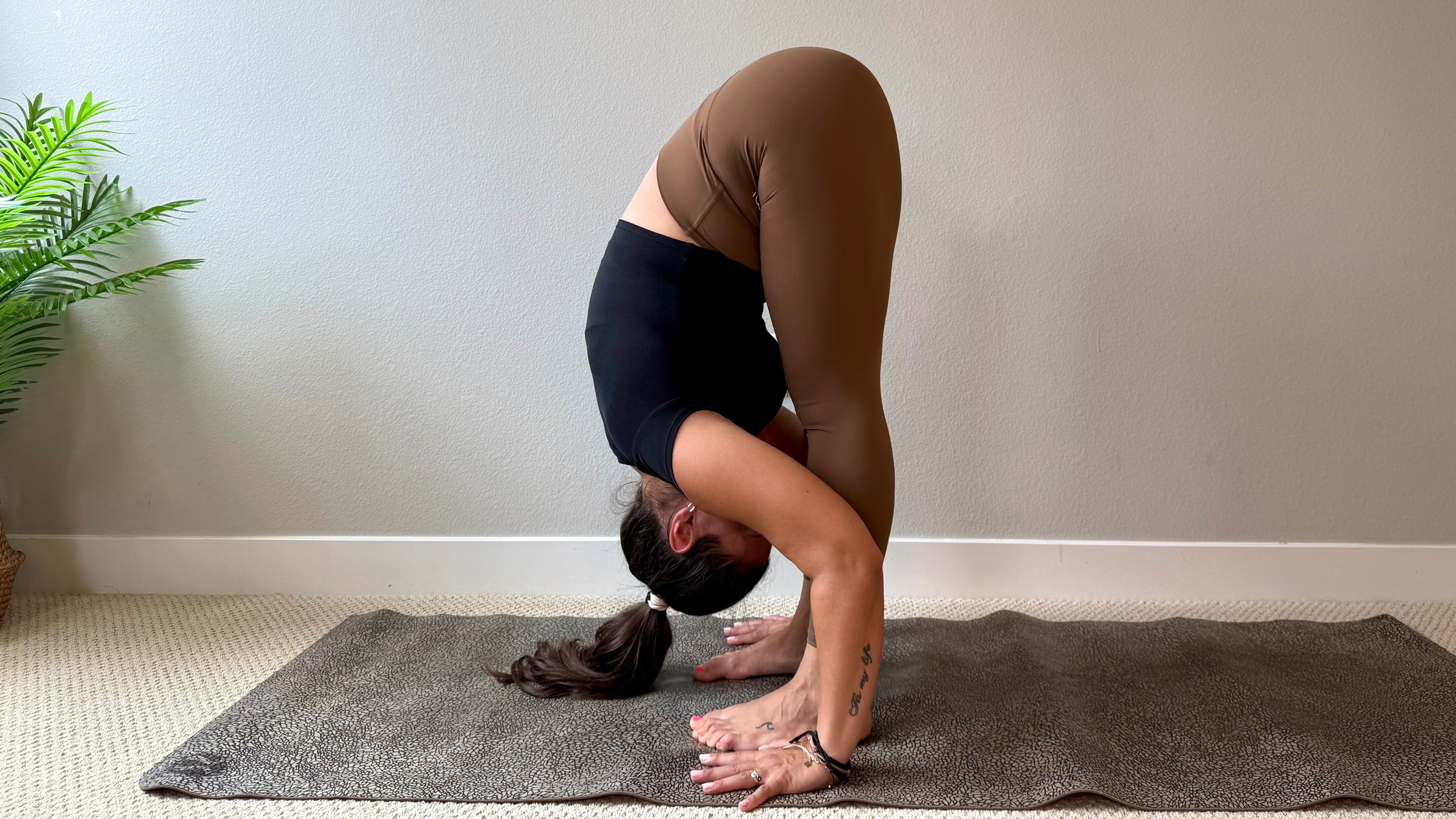
Time: 1-2min
- Stand with your feet slightly wider than hip-width apart and your toes turned out.
- As you inhale, sink into a deep squat.
- On your exhale, straighten your legs and fold your torso forward, so your head is pointing down.
- Flow back and forth between these two positions, syncing the movement with your breath, letting your hips, back, and legs release tension with each move.

Lou Mudge is a Health Writer at Future Plc, working across Fit&Well and Coach. She previously worked for Live Science, and regularly writes for Space.com and Pet's Radar. Based in Bath, UK, she has a passion for food, nutrition and health and is eager to demystify diet culture in order to make health and fitness accessible to everybody.
Multiple diagnoses in her early twenties sparked an interest in the gut-brain axis and the impact that diet and exercise can have on both physical and mental health. She was put on the FODMAP elimination diet during this time and learned to adapt recipes to fit these parameters, while retaining core flavors and textures, and now enjoys cooking for gut health.
You must confirm your public display name before commenting
Please logout and then login again, you will then be prompted to enter your display name.
